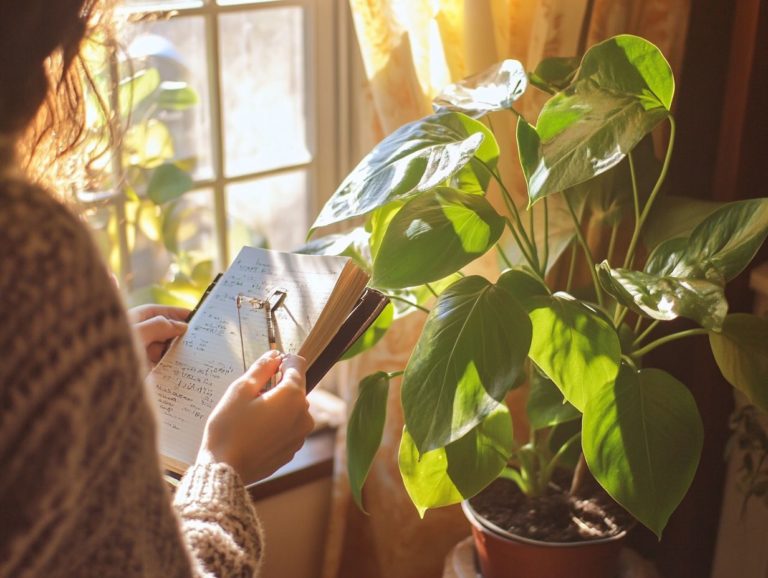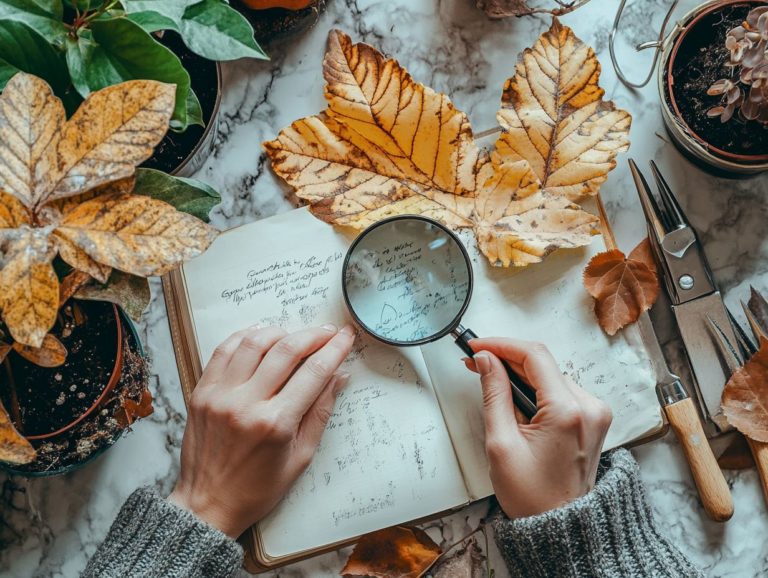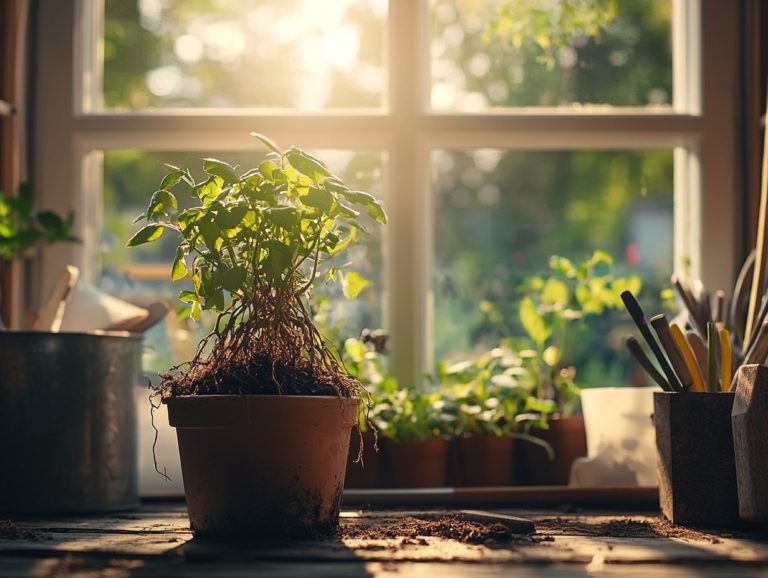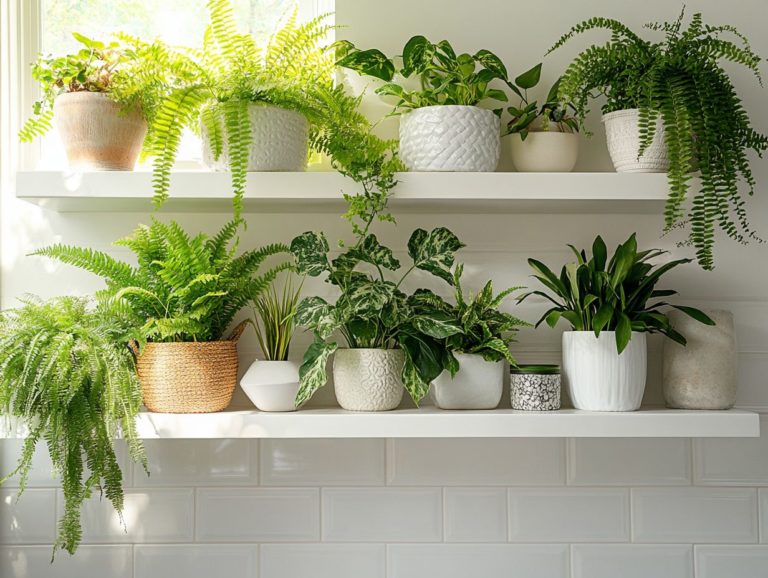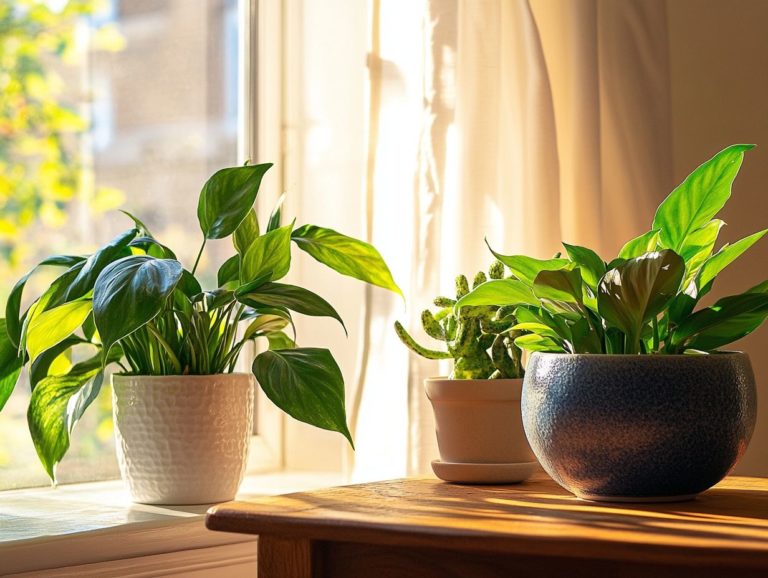How to Revive a Dying Indoor Plant?
Indoor plants undoubtedly infuse life and vibrancy into your space. But what should you do when they start to wilt and lose their luster? Recognizing the signs of a dying plant is essential for any devoted plant parent.
You ll discover the telltale symptoms that indicate distress, the common culprits behind their decline, and the effective steps you can take to restore your greenery. Additionally, you ll find valuable tips to prevent future issues, along with alternatives to consider if plant revival proves impossible.
Ready to revive your plants? Let s get started!
Contents
- Key Takeaways:
- Identifying a Dying Indoor Plant
- Causes of a Dying Indoor Plant
- Reviving a Dying Indoor Plant
- Preventing Future Decline
- Alternative Solutions for a Dying Indoor Plant
- Frequently Asked Questions
- What are some signs that my indoor plant is dying, including yellow leaves and wilting leaves?
- How can I determine the cause of my indoor plant’s decline?
- What should I do if my indoor plant is wilting or drooping?
- Is it possible to revive a dying houseplant?
- How can I revive my indoor plant if it is lacking nutrients?
- What are some general tips for keeping indoor plants healthy and thriving?
Key Takeaways:
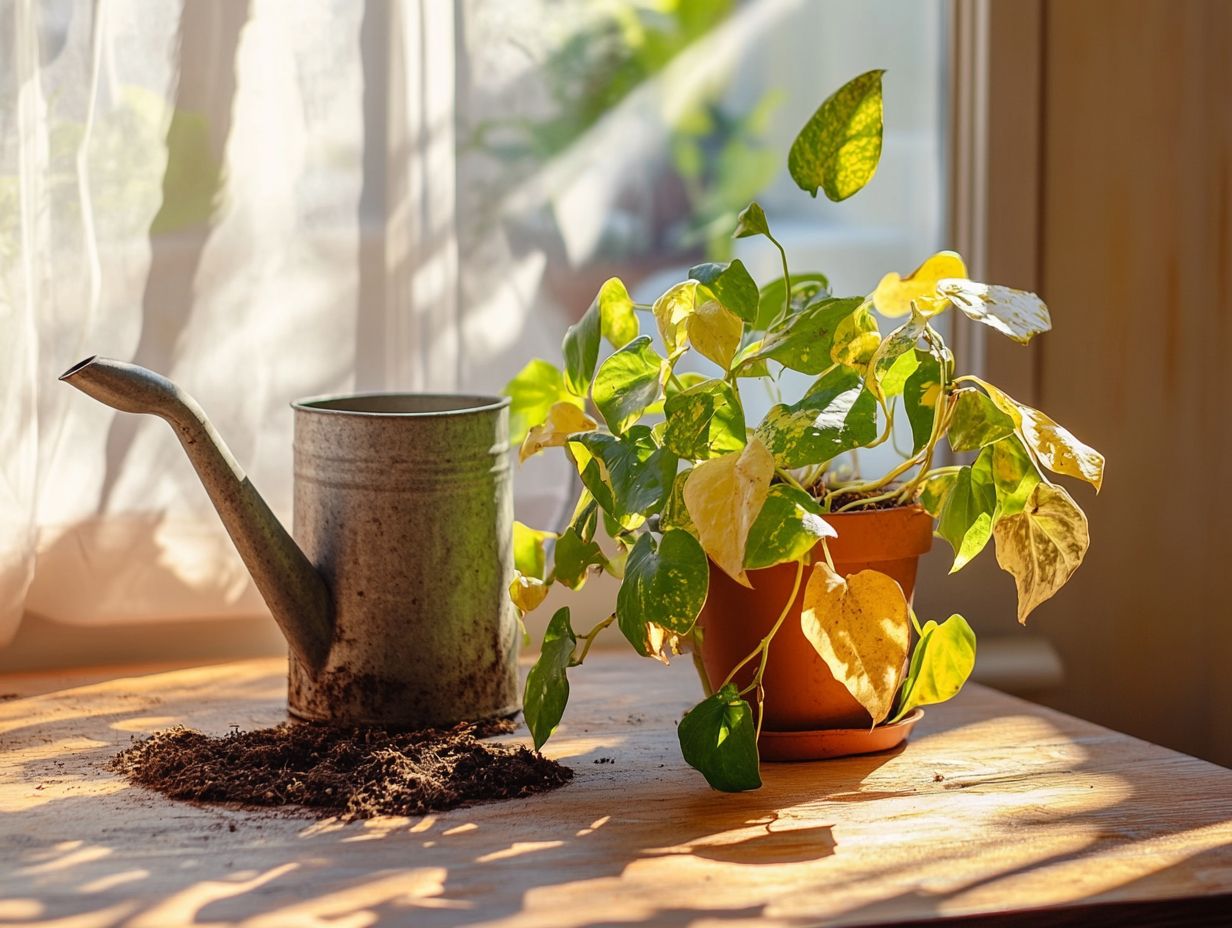
- Spot the signs of a dying houseplant. Quick action can save it!
- Improper watering, lighting, and pests are the main reasons for plant decline.
- Revive a dying indoor plant by adjusting watering, lighting, and treating pests.
Identifying a Dying Indoor Plant
Identifying a struggling indoor plant can feel overwhelming for any plant parent. However, with the right knowledge and a sharp eye, you can easily spot the signs that indicate your houseplants may not be thriving.
Look out for common indicators like yellowing leaves, wilting leaves, and drooping stems. These may signal underlying health issues such as overwatering or underwatering, often stemming from poor environmental conditions or insufficient light exposure.
Spotting these symptoms early is key. Acting fast can save your plant!
Signs and Symptoms
Common indicators, like yellow leaves, often point to overwatering or a lack of essential nutrients, while wilting leaves might suggest underwatering or root rot. A drooping stem could signal a lack of support or a problem with the soil moisture levels.
For example, if you notice both yellow leaves and drooping stems, it may indicate a more serious issue that requires your immediate intervention.
By accurately interpreting these symptoms, you can take proactive measures, such as adjusting your watering routine or providing the right fertilizers, ensuring your indoor plants continue to flourish.
Causes of a Dying Indoor Plant
Understanding the reasons behind a struggling indoor plant is crucial for anyone who aspires to maintain the health of their green companions. Numerous factors can play a role in this decline, including overwatering, underwatering, and environmental conditions that fail to support optimal growth.
Issues such as root rot, nutrient deficiencies, and the invasion of common pests can profoundly impact the vitality of your indoor plants. These challenges can lead to a range of problems that demand your immediate attention.
Common Reasons for Decline
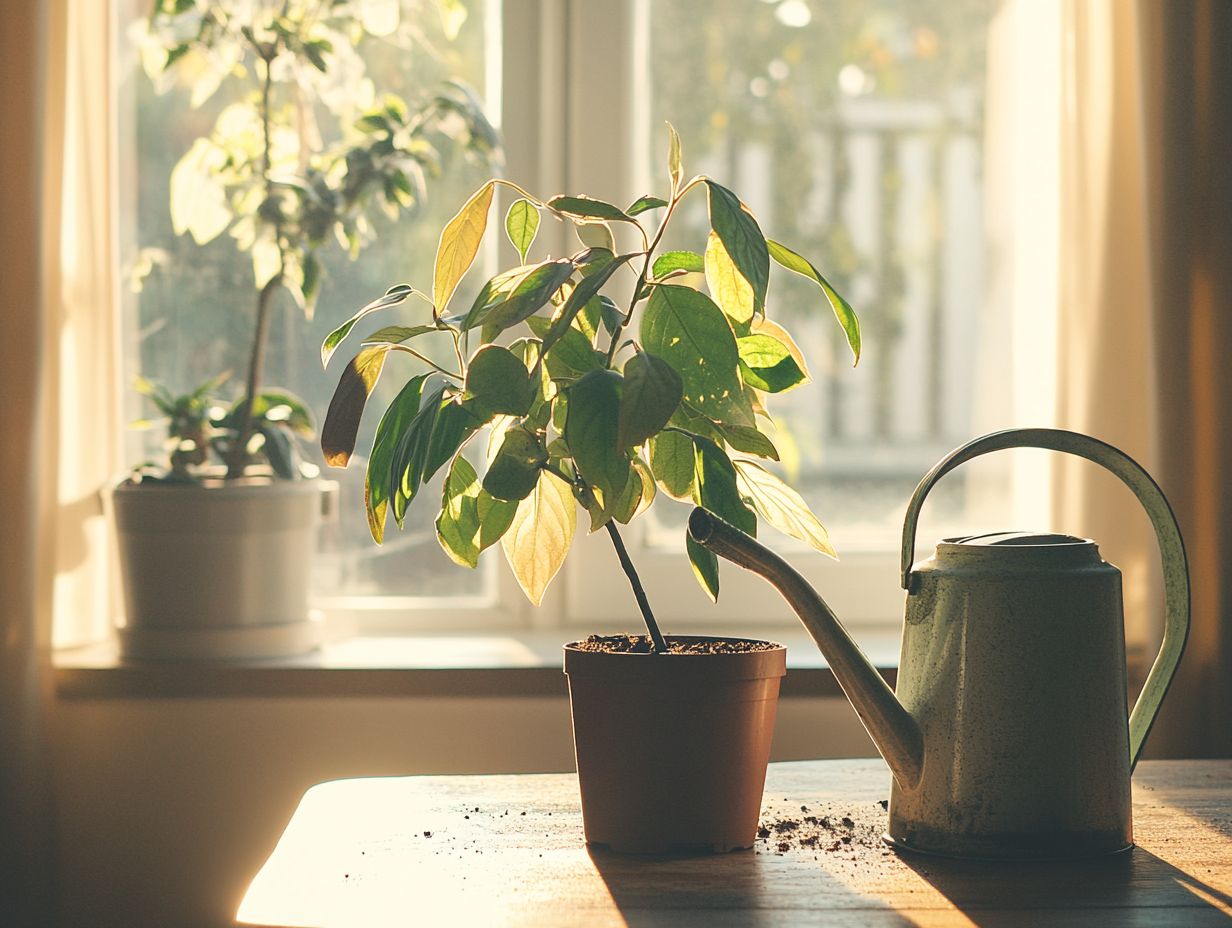
Common reasons for the decline of indoor plants often stem from issues like overwatering, which can lead to root rot, or underwatering, a sign that your plant is struggling to survive in its surroundings.
The light conditions in your home can significantly impact your plants’ health; insufficient light can hinder how plants make their food using sunlight, resulting in stunted growth and yellowing leaves. Meanwhile, too much direct sunlight can scorch those delicate leaves.
Poor soil drainage can worsen these issues, trapping water around the roots and creating a breeding ground for harmful pathogens. It’s essential to keep an eye on factors like humidity levels and temperature fluctuations, as extreme changes can stress your plants, making them more susceptible to pests and diseases.
By understanding these interconnected issues, you can make informed adjustments to ensure your indoor garden thrives.
Reviving a Dying Indoor Plant
Reviving a struggling indoor plant isn’t just possible; it’s a fulfilling journey for those who are committed to restoring their green companions to vibrant health. By carefully assessing soil moisture levels and repotting with containers that have adequate drainage holes, you’re taking crucial steps toward revitalizing your plants. Watch your home transform into a lush oasis!
Each thoughtful action you take not only aids in their recovery but also lays the foundation for a robust care routine for your plants. Incorporating regular pruning and tackling any pest issues will further enhance your plants’ well-being, transforming your home into a lush oasis of thriving greenery.
Steps to Take
Taking actionable steps is crucial when it comes to reviving a struggling indoor plant, enabling you to implement effective care routines that breathe new life into your houseplants.
The first step in this journey often involves repotting the plant, a move that alleviates root congestion and introduces much-needed fresh nutrients.
Once you’ve secured a new pot with proper drainage, don t overlook the moisture level. Both overwatering and underwatering can add unnecessary stress to your plant. Monitor the soil and consider using a moisture meter, a tool that measures the dampness of the soil, to help you water accurately.
Pruning away any brown or dead leaves redirects the plant s energy toward new growth. Together, these strategies highlight the importance of a structured and attentive approach to plant care, ensuring that your indoor garden thrives in longevity and beauty.
Preventing Future Decline
Preventing future decline in your indoor plants is crucial for any devoted plant parent. It demands your thoughtful attention to their unique needs and a willingness to adapt your care routines with the changing seasons. Act now to keep your plants thriving!
Understanding the essential growing conditions, humidity levels, and light requirements helps you grow healthy roots and green leaves, considerably reducing the likelihood of a houseplant’s demise. However, if you notice your plant struggling, you might want to check out what to do if my indoor plant is wilting for helpful tips.
Tips for Maintaining Healthy Indoor Plants
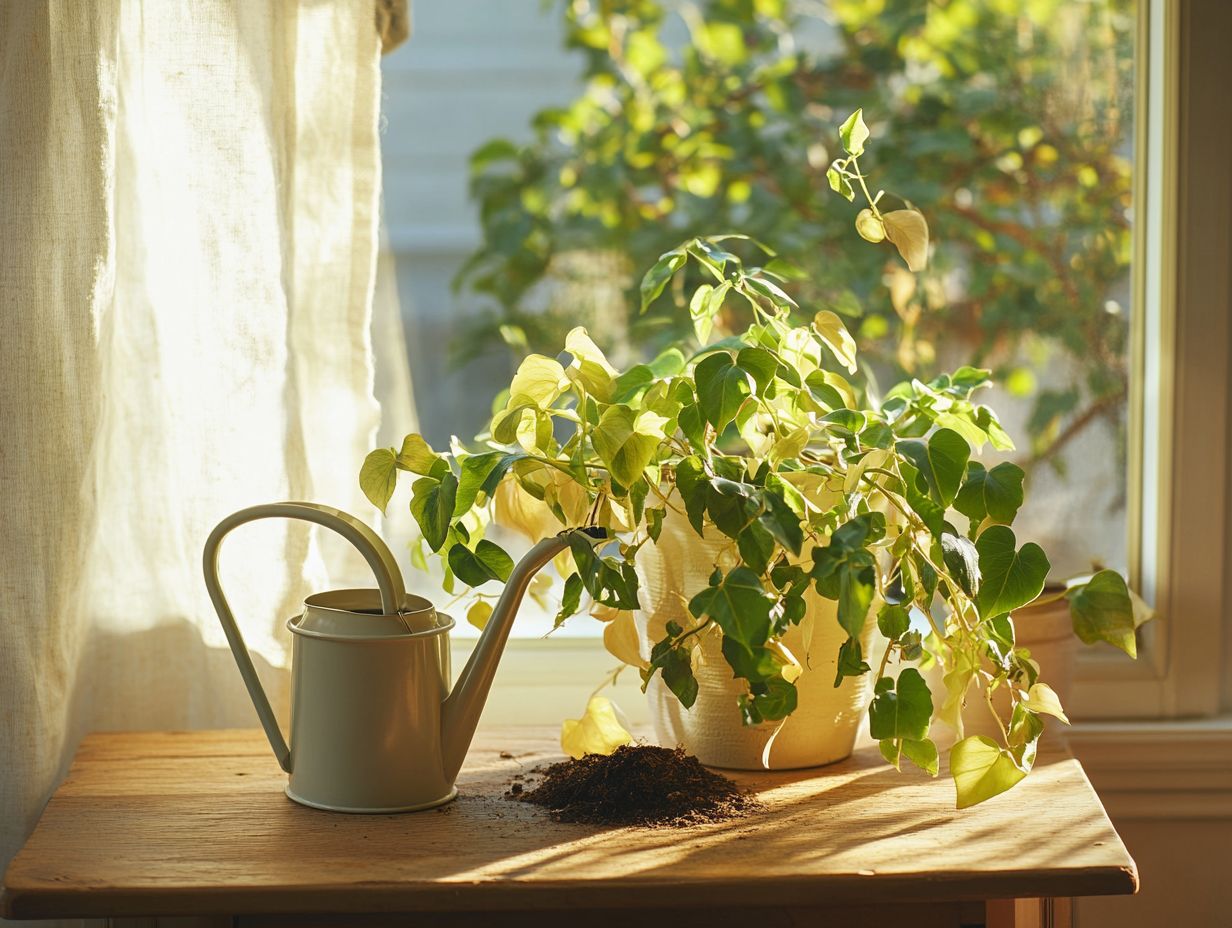
To maintain healthy indoor plants, it’s essential for you to develop an effective watering schedule while gaining a keen understanding of their specific environmental conditions and light requirements. Without this solid foundation, your plants can quickly fall into the trap of being overwatered or underwatered, which leads to stress and potential health issues.
Pay close attention to the characteristics of each plant type; some thrive in higher humidity levels, while others prefer a drier atmosphere. You should also monitor light exposure certain plants may flourish in indirect sunlight, while others demand bright, direct light.
By establishing a routine that incorporates these key elements, you can create a vibrant and healthy indoor garden that brings both joy and serenity to your living space.
Alternative Solutions for a Dying Indoor Plant
If your efforts to revive a struggling indoor plant aren t working, it s time to act quickly. Exploring alternative solutions like replacement or repurposing can open up new avenues for growth and aesthetic appeal in your space, especially when considering pot-bound plants.
Take a moment to assess whether the plant is pot-bound or plagued by common pests. Consider how you might integrate its remnants into your home decor, all while maintaining a seamless care routine for your plants that keeps your indoor oasis thriving.
Considering Replacement or Repurposing
Considering replacement or repurposing can be a wise move when confronted with a struggling indoor plant. This approach offers a chance to rejuvenate your indoor garden.
It helps you tackle underlying health issues that caused the plant’s decline. Take a moment to thoughtfully assess the conditions that might have contributed to its deterioration. The pot may be too small, preventing the roots from growing and absorbing nutrients properly, or perhaps bugs that can harm your plant have invaded. By evaluating these factors, you position yourself to make informed decisions on how to revive a wilting houseplant.
You can choose to start fresh with a different variety that suits your space better or embark on the rewarding journey of repotting to nurture its recovery. This entails selecting the right soil, ensuring proper drainage, and keeping a watchful eye on environmental conditions. If your plants need extra care after being left unattended, consider tips for reviving indoor plants after travel. Such efforts not only promote thriving plant life but also enhance the overall aesthetic of your living space.
Frequently Asked Questions
What are some signs that my indoor plant is dying, including yellow leaves and wilting leaves?
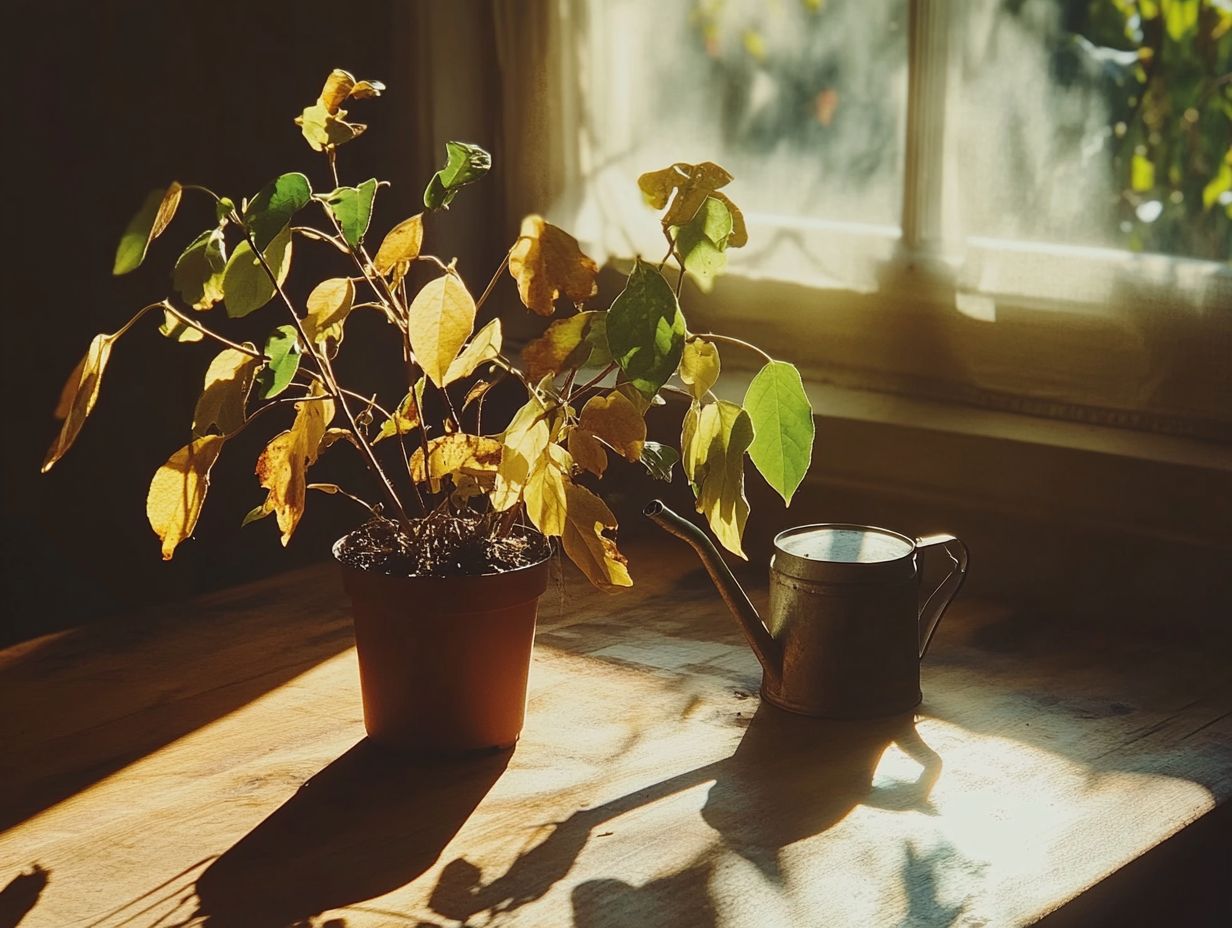
Some common signs that your indoor plant is dying include yellowing leaves, browning leaves, wilting leaves, or drooping stems, and a general lack of growth or development.
How can I determine the cause of my indoor plant’s decline?
To determine the cause of your indoor plant’s decline, first check for signs of pests or diseases. If those are ruled out, consider factors such as insufficient sunlight, over or under-watering, and poor soil quality.
What should I do if my indoor plant is wilting or drooping?
If your indoor plant is wilting or drooping, it could be a sign of underwatering or overwatering. Check the soil moisture level and adjust your watering routine accordingly. Wilting could also be a sign of root rot, so be sure to check for any signs of disease.
Is it possible to revive a dying houseplant?
In most cases, it is possible to revive a dying indoor plant if you catch the problem early and take the appropriate steps to address it. However, there are some cases where the plant may be too far gone and cannot be saved.
How can I revive my indoor plant if it is lacking nutrients?
If your indoor plant is lacking nutrients, you can try fertilizing it with a balanced fertilizer. Be sure to follow the instructions carefully and avoid over-fertilizing, as this can harm the plant. You can also try repotting with fresh, nutrient-rich soil to improve plant health.
What are some general tips for keeping indoor plants healthy and thriving?
To keep your indoor plants healthy and thriving, provide them with adequate sunlight, water, and nutrients. Regularly check for signs of insect pests or diseases and address them promptly. Research each plant’s specific care needs, including light exposure and humidity levels, and provide the appropriate environment for it to thrive.
Act now to save your plant and create a thriving indoor garden!

